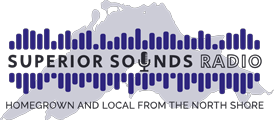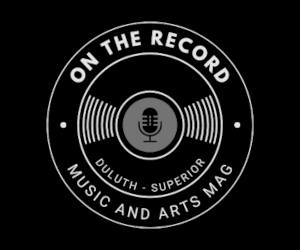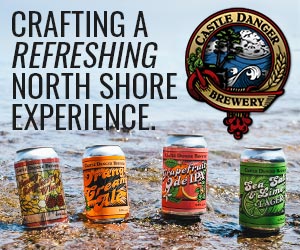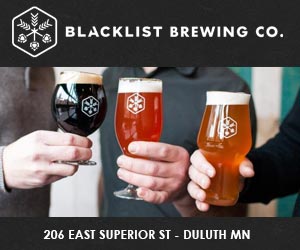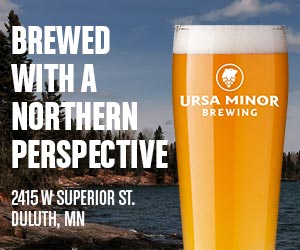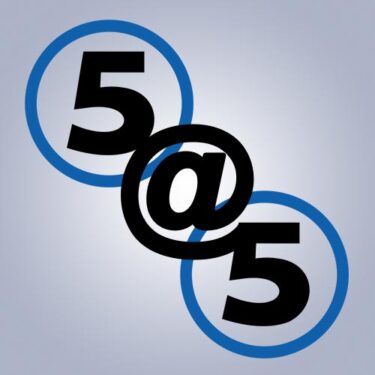Carl Perkins

Carl Perkins (April 9, 1932 - January 19 1998) was an American rockabilly singer, guitarist and songwriter, performing early Rockabilly and Rock n Roll along with more traditional Country and Gospel music for decades before his death at age 65. His best known song was "Blue Suede Shoes" in 1956 which was the first single to top three charts listed by Billboard Magazine - popular, country and western, and rhythm and blues. Perkins had a long association with musical collaborator Johnny Cash, and was a an influence on numerous artists including The Beatles, and the Rolling Stones.
A highly regarded and influential American pioneer of rockabilly music, a mix of rhythm and blues and country music, recorded most notably at Sun Records in Memphis, beginning in 1954. An outstanding performer, his touch on rock and roll music is still heard to this day.
According to country musician Charlie Daniels, "Carl Perkins' songs personified the Rockabilly Era, and Carl Perkins' sound personifies the Rockabilly Sound more so than anybody involved in it, because he never changed." Perkins's songs have been recorded by artists as influential as Elvis Presley, The Beatles, and Johnny Cash, which further cemented his place in the history of popular music.
Carl Lee Perkins was the son of poor sharecroppers near Tiptonville, Tennessee. He grew up hearing Southern gospel music sung by whites in church and by black field workers when he started working in the cotton fields at age six. In the spring and fall, the school day would be followed by several hours of work in the fields. During the summer workdays were 12 - 14 hours, "from can to can't". Carl and his brother Jay together would earn 50 cents per day. With all family members working, and credit, there was enough money for beans and potatoes, some tobacco for Carl's father Buck, and every so often the luxury of a five cent bag of hard candy.
On Saturday nights he would listen to the radio along with his father and hear music from the Grand Ole Opry. Roy Acuff's broadcast performances on the Opry inspired Perkins to ask his parents for a guitar. Because they couldn't afford a real guitar, Carl's father fashioned one from a cigar box and a broomstick. When a neighbor in tough straits offered to sell his dented and scratched Gene Autry signature model guitar with worn out strings, Buck purchased it for a couple of dollars. For the next year Carl taught himself parts of Roy Acuff's "Great Speckled Bird" and "The Wabash Cannonball", which he had heard on the Opry. Perkins also cites the sped up, driving. straight time playing and detached but determined, wispy but challenging vocals of Bill Monroe as an early influence.
Carl began learning more about playing his guitar from a fellow field worker named John Westbrook who befriended him. "Uncle John", as Carl called him, was an African American in his sixties who played blues and gospel on his battered acoustic guitar. Most famously, "Uncle John" advised Carl when playing the guitar to "Get down close to it. You can feel it travel down the strangs, come through your head and down to your soul where you live. You can feel it. Let it vib-a-rate." Because Carl couldn't afford new strings when they broke, he retied them. The knots would cut into his fingers when he tried to slide to another note, so he began bending the notes, stumbling onto a type of blue note."
Carl was recruited to be a member of the Lake County Fourth Grade Marching Band, and because of the Perkins' limited finances, was given a new white shirt, cotton pants, white band cap and red cape by Miss Lee McCutcheon, who was in charge of the band.
In January of 1947, Buck Perkins moved his family from Lake County to Madison County. A replacement radio which ran on electricity rather than battery, and the nearness of Memphis made it possible for Carl to hear a wider variety of music.
At age fourteen, using the I IV V chord progression common to country songs of the day, he wrote a song that would be known as "Let Me Take You To the Movie, Magg" around Jackson. (The same song would convince Sam Phillips to sign Perkins to his Sun Records label.)
Beginnings as a Performer:
Perkins and his brother Jay had their first paying job (in tips) as entertainment at the "CottonBoll" on Highway 45 some twelve miles south of Jackson, TN starting on Wednesday nights in late 1946. Carl was only fourteen years old. One of the songs they played was an uptempo, country blues shuffle version of Bill Monroe's "Blue Moon of Kentucky". Free drinks were one of the perks of playing in a honky tonk, and Carl drank four beers that first night. Within a month Carl and Jay began playing Friday and Saturday nights at the Sand Ditch near the western boundary of Jackson. Both places were the scene of frequent fights, and both of the Perkins Brothers gained a reputation as fighters.
In the next couple of years the Perkins Brothers began playing other tonks, including El Rancho, The Roadside Inn, and the Hilltop, around Bemis and Jackson as they became a big draw. Carl talked his brother Clayton into playing the bass fiddle to fill in the sound of the band.[13] Carl began appearing regularly on Jackson radio station WTJS in the late forties as a sometime member of the Tennessee Ramblers. He also appeared on another show, Hayloft Frolic, where he performed two single songs; sometime including "talking Blues" as done by Robert Lunn on the Grand Ole Opry. Carl, and then his brothers began appearing on The Early Morning Farm and Home Hour. Overwhelmingly positive listener response led to a fifteen minute segment sponsored by Mother's Best Flour. By the end of the 40s, the Perkins Brothers were in a league of their own as the best known band in the Jackson area.
Carl had day jobs during most of these early years, working first at picking cotton, then at Day's Dairy in Malesus, then a mattress factory, and in then a battery plant. He then began as a pan greaser at the Colonial Baking Company and worked there from 1951 through 1952.
In January of 1953 Carl married a woman he had known for a number of years, Valda Crider. When his job at the bakery was reduced to part time, Valda, who had her own job at the time, encouraged Carl to begin working the tonks full time. Carl began playing six night a week. Late in the same year he added W.S. "Fluke" Holland, who had no previous experience as a musician, but a good sense of rhythm, to the band as a drummer.
In July of 1954, Perkins and his wife, Valda, heard a new release of "[Blue Moon of Kentucky" by Elvis Presley, Scotty, and Bill on the radio.[18] Valda exclaimed, "Listen! They play like y'all! It sounds like you!" After recording the take of the song that was released, Presley exclaimed, "That sounds like Carl Perkins!". As "Blue Moon of Kentucky faded out, Carl said, "There's a man in Memphis who understands what we're doing. I need to go see him."
Sun Records era:
Perkins successfully auditioned for Sam Phillips at Sun Records early in October of 1954. "Movie Magg" and "Turn Around" were released on the Phillips owned Flip label (151) March 19, 1955 hit. with "Turn Around" becoming a regional. With "Turn Around" getting airplay across the South and Southwest, Perkins was booked to appear along with Elvis Presley at theaters in Mariana and West Memphis, Arkansas. Commenting on the audience reaction to both Presley and himself Perkins said, "When I'd jump around they'd scream some, but they were gettin' ready for him. It was like TNT, man, it just exploded. All of a sudden the world was wrapped up in rock."
Johnny Cash and the Tennessee Two were the next musicians to be added to the performances by Sun musicians. Over the summer of '55 there were trips to Little Rock, Forrest City, Corinth, and Tupelo. Again performing at El Rancho, the Perkins brothers were involved in an automobile accident. A friend, who had been driving, was pinned by the steering wheel. Perkins managed to drag him from the car, which had caught on fire. Clayton had been thrown from the car, but was not seriously injured."
Another Perkins' tune "Gone Gone Gone", released in October 1955 by Sun, was also a regional hit. It was backed by the more traditional "Let The Juke Box Keep On Playing", complete with fiddle, "Western Boogie" bass line, steel guitar, and weepy vocal.
That same fall of 1955, Perkins wrote the song "Blue Suede Shoes" after seeing a dancer at a honky-tonk get mad at his date for scruffing up his blue suede shoes. Several weeks later, on December 19, 1955, Perkins and his band recorded the song during a session at the Sun studios in Memphis. Phillips suggested changes to the lyrics ("Go Cat Go") and the band changed the end of the song to a boogie vamp. During the long session, as liquor flowed, the sound became tougher, harder and looser, and Perkins played with passion. Phillips knew he had found the right song to bring out the blues strain in Perkins' music and produce a pop hit. Elvis Presley left Sun for a larger opportunity with RCA in November, and on December 19, 1955, Phillips, who had begun recording Perkins in late 1954, told Perkins, "Carl Perkins, you're my rockabilly cat now".
Released on January 1, 1956, "Blue Suede Shoes" was a massive chart success. In the United States, it went to #1 on Billboard magazine's country music charts (the only #1 hit he would have) and to #2 on Billboard's Best Sellers pop music chart. Finally, on March 17, Perkins became the first country artist to reach the #3 spot on the rhythm & blues charts. In the United Kingdom, it became a Top Ten hit. It was the first record by a Sun label artist to sell a million copies.
The Accident:
After playing a show in Norfolk, VA on March 21, 1956, the Perkins Brothers Band headed for New York City and their appearance on the nationally broadcast Perry Como Show. Shortly before sunrise near Dover, Delaware Stuart Pinkham (aka Dick Stuart, and Poor Richard) assumed the duties as driver. After running head on into the back of a pickup truck, their car ended up in a ditch of water about a foot deep, and Carl was lying face down in the water. Drummer W.C. Holland rolled Carl over, saving him from drowning. Carl had suffered 3 fractured vertebrae in his neck, a severe concussion, a broken collar bone, and lacerations all over his body in the crash. Carl remained unconscious for an entire day. The driver of the pickup, Thomas Phillips, a forty year old farmer, died when he was thrown into the steering wheel of his pickup. Carl's brother Jay had a fractured neck along with severe internal injuries.
On March 23 Bill Black, Scotty Moore and D.J. Fontana visited Carl on their way to New York to appear with Elvis the next day. Bill Black told Carl, "Hey, man, Elvis sends his love", and lit a cigarette for him, in spite of the fact that the patient in the next bed was in an oxygen tent. A week later, Carl was given a telegram, which had actually arrvied on the 23rd, from Elvis wishing him a speedy recovery.
Sam Philips had planned to surprise Perkins with a gold record during the Perry Como show. "Shoes" had already sold more than 500,000 copies by March 22. Now, while Carl recuperated from the accident, "Blue Suede Shoes" rose to number one on most pop, R&B, and country regional charts. It also held the number two positon on the Billboard Hot 100 and country charts. Elvis Presley's "Heartbreak Hotel" held the number one position on the pop and country charts, while "Shoes" did better than "Heartbreak" on the R&B charts. By Mid-April, more than one million copies of "Shoes" had been sold.
On April 3, while still out of commission, but back in Jackson, Perkins would see his friend Elvis Presley perform "Blue Suede Shoes" on his first Milton Berle Show appearance. Presley performed the song on national television 3 times that year, and made references to it twice during an appearance on The Steve Allen Show. Although his version became more famous than Perkins', it only reached #20 on Billboard's pop chart.
Return to Recording and Touring:
Perkins returned to live performances on April 21 of the same year beginning with an appearance in Beaumont, Texas with the "Big D Jamboree" tour.
Before resuming life on the road, Sam Phillips arranged a recording session at Sun with Ed Cisco filling in for the still recuperating Jay. By mid-April "Dixie Fried", "Put Your Cat Clothes On", "Right String, Wrong Yo-Yo", "You Can't Make Love to Somebody", "Everybody's Trying to Be My Baby", and "That Don't Move Me" had been recorded.
Perkins was paid $1,000 to play just two songs a night on the extended tour of "Top Stars of '56" beginning in early summer. A couple of the other performers on this tour were Chuck Berry, and Frankie Lymon and the Teenagers. When Perkins and the group took the stage in Columbia, SC, Carl was appalled to see a teenager with a bleeding chin pressed against the stage by the crowd. During the first guitar break of "Honey Don't" they were waved off stage and into a vacant dressing room behind a double line of police officers. Carl is quoted as saying, "It was dangerous. Lot of kids got hurt. There was a lot of rioting going on, just crazy, man! The music drove 'em insane." Appalled by what he had seen and experienced, Carl left the tour.
Sun issued more Perkins' songs in 1956: Boppin'The Blues/All Mama's Children (Sun 243), Dixie Fried/I'm Sorry, I'm Not Sorry (Sun 249). Matchbox/All Mama's Children (Sun 261) came out in February of 1957. Matchbox is considered to be a rockabilly classic, and George Thorogood and the Destroyers covered "Dixie Fried" on their 1985 album Maverick.
The day Matchbox was recorded, Elvis Presley visited the studio. Along with Johnny Cash (who left early), Perkins, Jerry Lee Lewis, and Presley spent more than an hour singing gospel, country and rhythm-and-blues songs while a tape rolled. The casual session was called The Million Dollar Quartet by a local newspaper the next day, and was eventually released on a disk in 1990.
The 1957 film Jamboree includes a Perkins performance of Glad All Over that runs 1:55. Glad All Over, written by Schroeder, Tepper, and Bennett, was released by Sun in January of 1958. Perkins also made at least two appearances on the Town Hall Party in Compton, CA in 1957. singing both Blues Suede Shoes and Matchbox. Those performances were included in the "Western Ranch Dance Party" series filmed and distributed by Screen Gems.
Life after Sun:
In 1958, Perkins moved to Columbia Records where he recorded songs such as: Jive at Five, Anyway the Wind Blows, Hambone, Pointed Toe Shoes and Sister Twister.
The Golden Nugget Casino in Las Vegas was the site of many performances in 1962 along with appearances in 9 mid Western states and a tour of Germany. Appearances at The Golden Nugget continued through 1963.
In May of 1964 Perkins toured England along with Chuck Berry, and Eric Burdon and The Animals backed the two stars from the States On the last night of the tour, he attended a party that turned out to be for him, and ended up sitting on the floor sharing stories, playing guitar, and singing songs while surrounded by The Beatles: John, Paul, George, and Ringo; who were at the time the hottest group in the world. Ringo asked Carl if he could record "Honey Don't." "Man," answered Carl, "go ahead, have at it." The Beatles, would cover "Matchbox", "Honey Don't", and also "Everybody's Trying to Be My Baby" recorded by Perkins but written by, and originally recorded by, Rex Griffin. Glad All Over, also performed by Perkins, but not written by him, and not to be confused with The Dave Clark Five song of the same name, was also covered. Another tour to Germany followed in the fall.
Although he had been trying to rehabilitate himself by only drinking beer (but lots of it), in 1968, while on tour with the Johnny Cash troupe, Perkins began a four day drunk in Tulsa, OK starting with a bottle of Early Times. Nevertheless, with the urging of Cash, he opened a show in San Diego by playing four songs after seeing "four or five of me in the mirror", and while being able to see "nothin' but a blur". After drinking yet another pint of Early Times, he passed out on the tour bus. By morning he started hallucinating "big spiders, and dinosaurs, huge, and they were gonna step on me." The bus was now parked on a beach at the ocean. He was tempted by yet another pint of whiskey that he had hidden on the bus. He took the bottle with him onto the beach and fell on his knees and said, "Lord... I'm gonna throw this bottle. I'm gonna show You that I believe in You." I sailed it into the Pacific... I got up, I knew I had done the right thing." Perkins and Cash, who had his own problems with drugs, then gave each other support to stay away from their drug of choice.
In 1968, Johnny Cash took the Perkins-written "Daddy Sang Bass" (based upon the American standard "Will the Circle Be Unbroken") to #1 on the country music charts. "Daddy Sang Bass" was also a Country Music Association nominee for Song of the Year. Perkins spent a decade in Cash's singer touring revue and appeared on The Johnny Cash Show. Perkins played "MatchBox" along with Cash and with Eric Clapton and band mates (Derek and the Dominoes). Cash also featured Perkins in rehearsal jamming with José Feliciano and Merle Travis.
A Kraft Music Hall episode hosted by Johnny Cash had Perkins singing his song "Restless"[17] on April 16, 1969.[18] Country music fans may recognize The Statler Brothers' song "Flowers on the Wall", which was also featured on this show. In February of 1969 Perkins joined with Bob Dylan to write the song "Champaign, Illinois". Dylan was recording in Nashville from February 12 through February 21 for an album that would be titled Nashville Skyline, and met Perkins when he appeared on The Johnny Cash Show on June 7.[19] Dylan had written one verse of a song, but was stuck. After Perkins worked out a loping rhythm and improvised a verse ending lyric, Dylan said, "Your song. Take it. Finish it."[41] The co authored song was included in Perkins' 1969 album "On Top".
Perkins was also united in 1969 by Columbia's Murray Krugman with a long-hair rockabilly group based in New York's Hudson Valley, the New Rhythm and Blues Quartet. Carl and NRBQ recorded "Boppin' the Blues" which featured the New York band backing Perkins on some songs like his staples "Turn Around" and "Boppin' the Blues" and included songs recorded separately by Carl and NRBQ.
One of his TV appearances with Cash was on the popular country series Hee Haw in an episode aired February 16, 1974.
In 1981 Perkins recorded the song 'Get It' with Paul McCartney, providing vocals and playing guitar with the former Beatle. This recording was included on the chart topping album Tug Of War released in 1982.[20] This track also appeared as the B-side of the title track single in a slightly edited form. One source states that Perkins "wrote the song with Paul McCartney".
The rockabilly revival of the 1980s helped bring Perkins back into the limelight. In 1985, he re-recorded "Blue Suede Shoes" with two members of the Stray Cats, as part of the soundtrack for the movie, Porky's Revenge. That same year, George Harrison, Eric Clapton, and Ringo Starr appeared with him on a television special taped in London, England, called Blue Suede Shoes: A Rockabilly Session. Perkins and his friends ended the session by singing his signature song, 30 years after its writing, which brought Perkins to tears.
In 1985, Perkins was inducted to the Nashville Songwriters Hall of Fame, and in 1987, wider recognition of his contribution to music came with his induction to the Rock and Roll Hall of Fame. In addition, "Blue Suede Shoes" was chosen as one of The Rock and Roll Hall of Fame's 500 Songs that Shaped Rock and Roll, and as a Grammy Hall of Fame Award recipient. His pioneering contribution to the genre has been recognized by the Rockabilly Hall of Fame.
Perkins' only notable film performance as an actor was in John Landis' 1985 film Into the Night, a cameo-laden film that includes a scene where characters played by Carl and David Bowie die at each other's hand.
In 1986, he returned to the Sun Studios in Memphis, joining Johnny Cash, Jerry Lee Lewis and Roy Orbison on the album Class of '55. The record was a tribute to their early years at Sun and, specifically, the Million Dollar Quartet jam session involving Perkins, Presley, Cash, and Lewis on December 4, 1956.
In 1989, he co-wrote and played guitar on The Judd's #1 country hit, "Let Me Tell You About Love".
Later years:
In 1989 Perkins signed a record deal for an album with the title Friends, Family, and Legends, featuring performances by Chet Atkins, Travis Tritt, Steve Wariner, Joan Jett, Charlie Daniels, along with Paul Shaffer and Will Lee. In 1992 Perkins developed throat cancer during the production of this CD. Perkins returned to Sun Studio in Memphis to record with Scotty Moore, Presley's first guitar player. The CD was called 706 ReUNION, released on Belle Meade Records, and featured D.J. Fontana, Marcus Van Storey and The Jordanaires. In 1993, Perkins appeared with the Kentucky Headhunters in a music video remake, shot in Glasgow, Kentucky, of his song Dixie Fried. Perkins' last album, Go Cat Go!, was released in 1996, and featured new collaborations with many of the above artists, as well as George Harrison, Paul Simon, John Fogerty, Tom Petty, and Bono. It was released by the independent label Dinosaur Records, and distributed by BMG.
His last major concert appearance was the "Music for Montserrat" all-star charity concert at Royal Albert Hall on September 15, 1997.
Death and legacy:
Four months later at Jackson-Madison County Hospital, Jackson, Tennessee, Carl Perkins died at the age of 65 from throat cancer after suffering several strokes. Among those in attendance at the funeral at Lambuth University in 1998 were ex-Beatle George Harrison, Jerry Lee Lewis, Wynonna Judd, Garth Brooks, Johnny Cash and June Carter Cash. He is interred at Ridgecrest Cemetery in Jackson, Tennessee.
In 2004, Rolling Stone ranked him #69 on their list of the 100 Greatest Artists of All Time.
Carl Perkins' wife, Valda deVere Perkins, died November 15, 2005 in Jackson, Tennessee.
Drive-By Truckers, on their album The Dirty South, recorded a song "Carl Perkins' Cadillac" that gives a poignant history of the artist and his relationships.
Perkins is the subject of an acclaimed biography, Go, Cat, Go, by noted New York-based music writer David McGee.
Plans for a biographical film about Perkins have been announced by Santa Monica-based production company Fastlane Entertainment.
Carl Perkins (pianist)
Carl Perkins (born August 16, 1928, Indianapolis, Indiana, died March 17, 1958, Los Angeles, California) was an American jazz pianist.
Perkins was born in Indianapolis but worked mainly in Los Angeles. He is best known for his performances with the Curtis Counce Quintet, which also featured Harold Land, Jack Sheldon and drummer Frank Butler. He also performed with the Clifford Brown–Max Roach group in 1954, and recorded with Frank Morgan in 1955. Perkins composed the standard "Grooveline."
His playing was influenced by his polio-affected left arm, which he held sideways over the keyboard.
He died of a drug overdose at age 29, having recorded one solo album, Introducing Carl Perkins, in 1955 and 1956. Authors Paul Tanner, Maurice Gerow, and David Megill cite Perkins as one of the best "funky," or hard bop, piano players, but his early death prevented him from leaving a legacy.
With Chet Baker and Art Pepper
Playboys (Pacific Jazz, 1956)
With Dizzy Gillespie
Jazz Recital (Norgran, 1955)
With Dexter Gordon
Dexter Blows Hot and Cool (Boplicity, 1955)
User-contributed text is available under the Creative Commons By-SA License; additional terms may apply.

